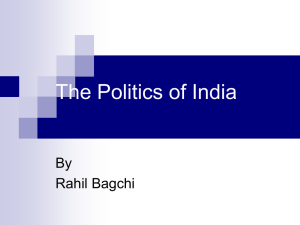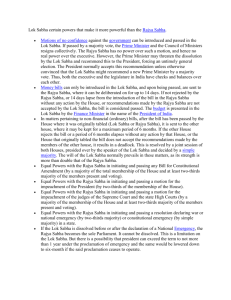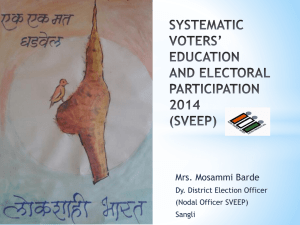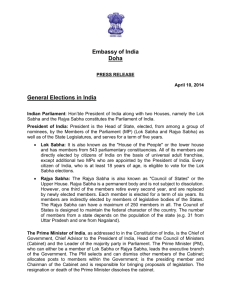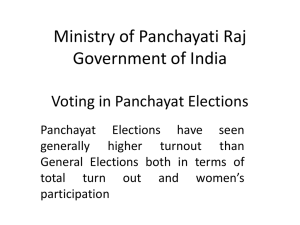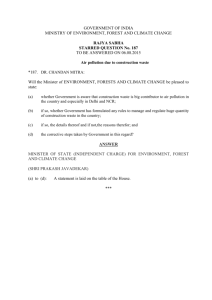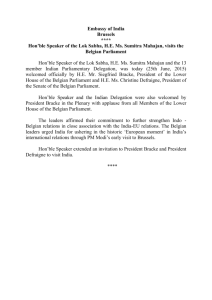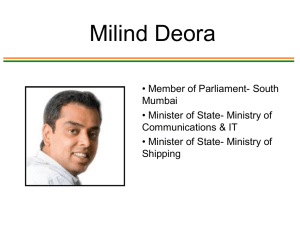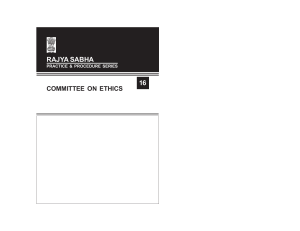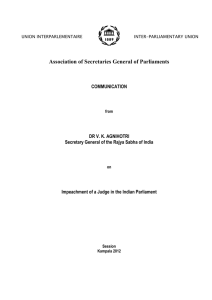Parliament - Netapedia
advertisement
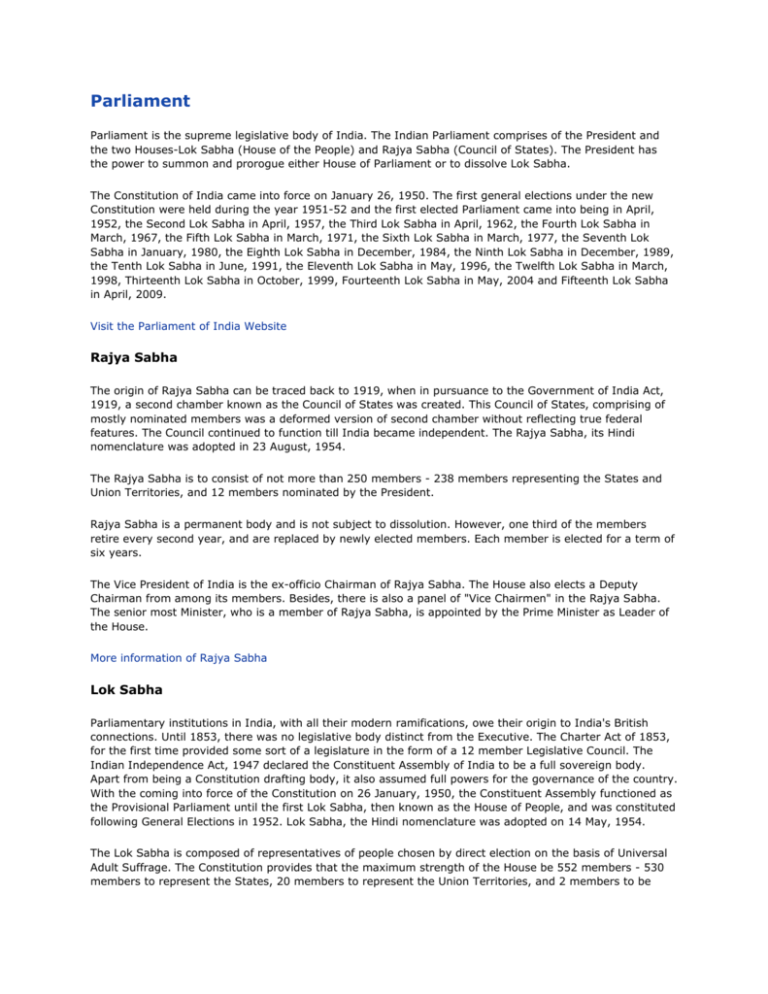
Parliament Parliament is the supreme legislative body of India. The Indian Parliament comprises of the President and the two Houses-Lok Sabha (House of the People) and Rajya Sabha (Council of States). The President has the power to summon and prorogue either House of Parliament or to dissolve Lok Sabha. The Constitution of India came into force on January 26, 1950. The first general elections under the new Constitution were held during the year 1951-52 and the first elected Parliament came into being in April, 1952, the Second Lok Sabha in April, 1957, the Third Lok Sabha in April, 1962, the Fourth Lok Sabha in March, 1967, the Fifth Lok Sabha in March, 1971, the Sixth Lok Sabha in March, 1977, the Seventh Lok Sabha in January, 1980, the Eighth Lok Sabha in December, 1984, the Ninth Lok Sabha in December, 1989, the Tenth Lok Sabha in June, 1991, the Eleventh Lok Sabha in May, 1996, the Twelfth Lok Sabha in March, 1998, Thirteenth Lok Sabha in October, 1999, Fourteenth Lok Sabha in May, 2004 and Fifteenth Lok Sabha in April, 2009. Visit the Parliament of India Website Rajya Sabha The origin of Rajya Sabha can be traced back to 1919, when in pursuance to the Government of India Act, 1919, a second chamber known as the Council of States was created. This Council of States, comprising of mostly nominated members was a deformed version of second chamber without reflecting true federal features. The Council continued to function till India became independent. The Rajya Sabha, its Hindi nomenclature was adopted in 23 August, 1954. The Rajya Sabha is to consist of not more than 250 members - 238 members representing the States and Union Territories, and 12 members nominated by the President. Rajya Sabha is a permanent body and is not subject to dissolution. However, one third of the members retire every second year, and are replaced by newly elected members. Each member is elected for a term of six years. The Vice President of India is the ex-officio Chairman of Rajya Sabha. The House also elects a Deputy Chairman from among its members. Besides, there is also a panel of "Vice Chairmen" in the Rajya Sabha. The senior most Minister, who is a member of Rajya Sabha, is appointed by the Prime Minister as Leader of the House. More information of Rajya Sabha Lok Sabha Parliamentary institutions in India, with all their modern ramifications, owe their origin to India's British connections. Until 1853, there was no legislative body distinct from the Executive. The Charter Act of 1853, for the first time provided some sort of a legislature in the form of a 12 member Legislative Council. The Indian Independence Act, 1947 declared the Constituent Assembly of India to be a full sovereign body. Apart from being a Constitution drafting body, it also assumed full powers for the governance of the country. With the coming into force of the Constitution on 26 January, 1950, the Constituent Assembly functioned as the Provisional Parliament until the first Lok Sabha, then known as the House of People, and was constituted following General Elections in 1952. Lok Sabha, the Hindi nomenclature was adopted on 14 May, 1954. The Lok Sabha is composed of representatives of people chosen by direct election on the basis of Universal Adult Suffrage. The Constitution provides that the maximum strength of the House be 552 members - 530 members to represent the States, 20 members to represent the Union Territories, and 2 members to be nominated by the President from the Anglo-Indian Community. At present, the strength of the House is 545 members. The term of the Lok Sabha, unless dissolved, is five years from the date appointed for its first meeting. However, while a proclamation of emergency is in operation, this period may be extended by Parliament by law for a period not exceeding one year at a time and not extending in any case, beyond a period of six months after the proclamation has ceased to operate. More information of Lok Sabha Difference between Lok Sabha and Rajya Sabha 1. Members of Lok Sabha are directly elected by the eligible voters. Members of Rajya Sabha are elected by the elected members of State Legislative Assemblies in accordance with the system of proportional representation by means of single transferable vote. 2. The normal life of every Lok Sabha is 5 years only while Rajya Sabha is a permanent body. 3. Lok Sabha is the House to which the Council of Ministers is responsible under the Constitution. Money Bills can only be introduced in Lok Sabha. Also it is Lok Sabha, which grants the money for running the administration of the country. 4. Rajya Sabha has special powers to declare that it is necessary and expedient in the national interest that Parliament may make laws with respect to a matter in the State List or to create by law one or more all-India services common to the Union and the States. Functions and Powers The cardinal functions of the Legislature include overseeing of administration, passing of budget, ventilation of public grievances, and discussing various subjects like development plans, international relations, and national policies. The Parliament can, under certain circumstances, assume legislative power with respect to a subject falling within the sphere, exclusively reserved for the states. The Parliament is also vested with powers to impeach the President, remove judges of Supreme and High Courts, the Chief Election Commissioner, and Comptroller and Auditor General in accordance with the procedure laid down in the Constitution. All legislation requires the consent of both Houses of Parliament. In the case of Money Bills, the will of the Lok Sabha prevails. The Parliament is also vested with the power to initiate amendments in the Constitution.
